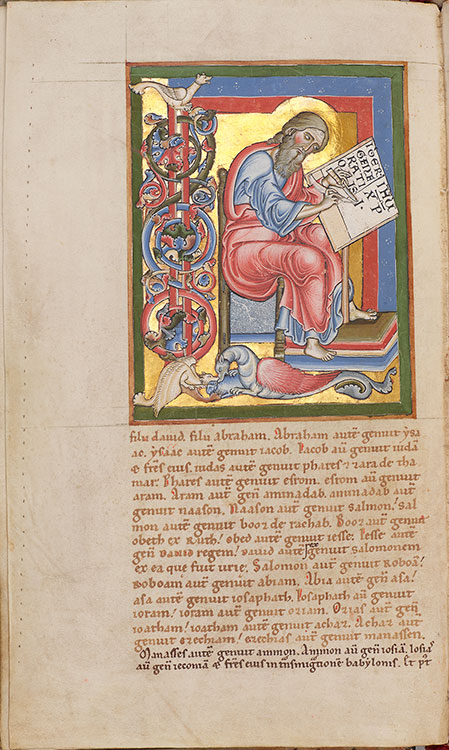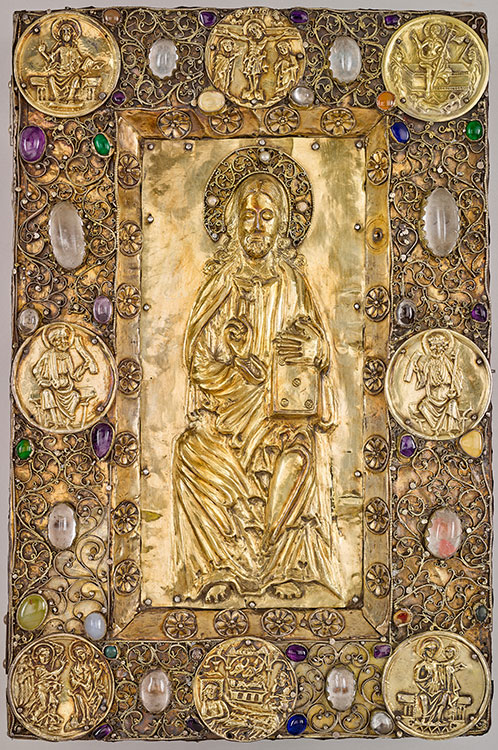Although monasteries produced the majority of manuscripts in the twelfth century, the task of illuminating these works did not always fall to monks. For prestigious commissions, monasteries could seek out professional painters, who traveled widely in search of work. This Gospel book was illuminated by two artists. The first was a monk of Hamersleben; the second, whose work is shown here, was a professional painter with a strikingly different style. The figure of the evangelist Matthew has been endowed with a thoughtful expression and dramatic drapery. He appears to occupy three-dimensional space, an effect heightened by contrasts between the varied surfaces. In these respects, the illuminator demonstrates firsthand knowledge of contemporary artistic developments across the continent. The pastiche book box (above), in which the manuscript was stored, combines thirteenth-century elements with nineteenth-century additions, such as the large plaque of Christ at center.
"Heiningen Gospels" (Fragment), in Latin
Germany, Hamersleben, ca. 1170 and ca. 1200 (manuscript)
Germany, Saxony, thirteenth century, and France, Paris, nineteenth century (book box)
The Morgan Library & Museum, MS M.565, fol. 13v
Purchased by J. Pierpont Morgan, 1905


